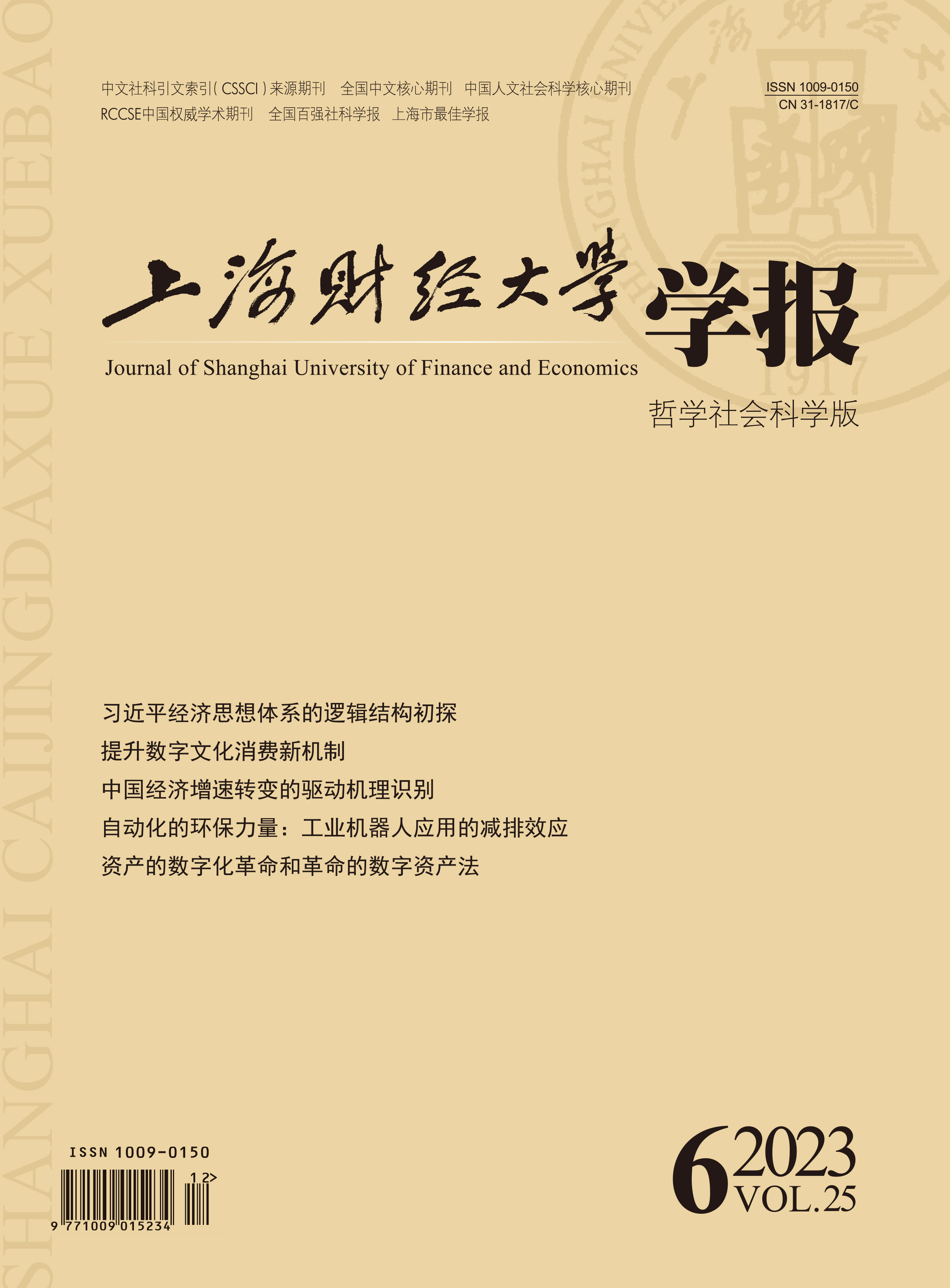智能化转型不仅是当前制造业面临的重大变革,也是世界各国产业升级的主要趋势,更是绿色生产的重要渠道之一。区别于现有文献侧重于分析工业机器人应用的经济效应,文章旨在研究工业机器人应用对企业污染物排放行为的影响。基于局部均衡模型推导出工业机器人应用对企业污染物排放量的影响及其机理,并进行实证验证。研究结果表明,企业应用工业机器人能够通过全要素生产率和能源利用效率两条途径实现减排效应;工业机器人应用可以促使企业提高清洁生产水平,但对其终端治理能力的提升作用有限;同时,工业机器人类型、企业劳动力密集度、行业竞争度以及污染或能耗强度也会对工业机器人应用的减排效应产生异质性影响。研究结论为推进中国制造业智能化转型以实现经济增长与环境保护协同发展提供了理论支撑和经验证据。
自动化的环保力量:工业机器人应用的减排效应
摘要
参考文献
20 王林辉, 胡晟明, 董直庆. 人工智能技术、任务属性与职业可替代风险: 来自微观层面的经验证据[J]. 管理世界,2022,(7). DOI:10.3969/j.issn.1002-5502.2022.07.012
23 余玲铮, 魏下海, 孙中伟, 等. 工业机器人、工作任务与非常规能力溢价——来自制造业“企业—工人”匹配调查的证据[J]. 管理世界,2021,(1). DOI:10.3969/j.issn.1002-5502.2021.01.007
26 Acemoglu D, Lelarge C, Restrepo P. Competing with robots: Firm-level evidence from France[J]. AEA Papers and Proceedings,2020,110:383–388. DOI:10.1257/pandp.20201003
27 Acemoglu D, Restrepo P. Modeling automation[J]. AEA Papers and Proceedings,2018a,108:48–53. DOI:10.1257/pandp.20181020
28 Acemoglu D, Restrepo P. The race between man and machine: Implications of technology for growth, factor shares, and employment[J]. American Economic Review,2018b,108(6):1488–1542. DOI:10.1257/aer.20160696
29 Acemoglu D, Restrepo P. Automation and new tasks: How technology displaces and reinstates labor[J]. Journal of Economic Perspectives,2019,33(2):3–30. DOI:10.1257/jep.33.2.3
30 Acemoglu D, Restrepo P. Robots and jobs: Evidence from US labor markets[J]. Journal of Political Economy,2020,128(6):2188–2244. DOI:10.1086/705716
31 Brandt L, Van Biesebroeck J, Zhang Y F. Creative accounting or creative destruction? Firm-level productivity growth in Chinese manufacturing[J]. Journal of Development Economics,2012,97(2):339–351. DOI:10.1016/j.jdeveco.2011.02.002
32 Fan H C, Hu Y C, Tang L X. Labor costs and the adoption of robots in China[J]. Journal of Economic Behavior & Organization,2021,186:608–631.
33 Hainmueller J. Entropy balancing for causal effects: A multivariate reweighting method to produce balanced samples in observational studies[J]. Political Analysis,2012,20(1):25–46. DOI:10.1093/pan/mpr025
34 Huang G, He L Y, Lin X. Robot adoption and energy performance: Evidence from Chinese industrial firms[J]. Energy Economics,2022,107:105837. DOI:10.1016/j.eneco.2022.105837
35 International Federation of Robotics. World robotics industrial robots[R]. 2021.
36 King G, Nielsen R. Why propensity scores should not be used for matching[J]. Political Analysis,2019,27(4):435–454. DOI:10.1017/pan.2019.11
37 Lewbel A. Using heteroscedasticity to identify and estimate mismeasured and endogenous regressor models[J]. Journal of Business & Economic Statistics,2012,30(1):67–80.
38 Wang E Z, Lee C C, Li Y Y. Assessing the impact of industrial robots on manufacturing energy intensity in 38 countries[J]. Energy Economics,2022,105:105748. DOI:10.1016/j.eneco.2021.105748
39 Zhang Q N, Zhang F F, Mai Q. Robot adoption and green productivity: Curse or Boon[J]. Sustainable Production and Consumption,2022,34:1–11. DOI:10.1016/j.spc.2022.08.025
引用本文
李卫兵, 李铭洋. 自动化的环保力量:工业机器人应用的减排效应[J]. 上海财经大学学报, 2023, 25(6): 88-103.
导出参考文献,格式为:





 5980
5980  8952
8952

